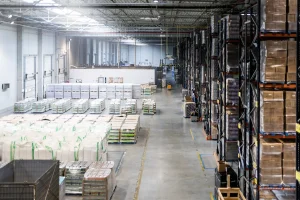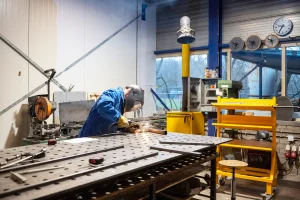For businesses to stay competitive today, they often need to ensure that their commercial properties are both efficient and inviting. This explains why many business owners undertake commercial property remodeling to enhance aesthetic appeal, maximize space, and achieve operational efficiency.
But when should you carry out a remodeling project like this? This guide will walk you through the considerations in undertaking a commercial remodeling project, from budget planning to contractor selection. You’ll also discover the benefits of remodeling and the ideal timing for renovations. Read on!
What is Commercial Property Remodeling?
Commercial property remodeling involves making major updates or alterations to a building to boost its appearance, functionality, and market value. It goes beyond mere repairs, as it encompasses both aesthetic and operational improvements that cater to modern business needs.
Commercial property remodeling also considers technological advancements, integrating smart systems and energy-efficient solutions with the goal of enhancing and future-proofing your property, while also supporting the evolving demands of your business.
Remodeling vs. Renovation: What’s the Difference for Your Commercial Space?
Though often used interchangeably, remodeling and renovation have distinct meanings. Renovation typically refers to restoring a building to its original state, such as updating old fixtures or applying fresh paint.
On the other hand, commercial property remodeling may include reconfiguring the layout or modifying structures to better suit your business needs. It allows for creative freedom, enabling you to design a space that embodies your brand and meets operational requirements.
Simply put, renovation focuses on revival, while remodeling drives transformation and innovation of the space.
Key Aspects to Consider in Commercial Property Remodeling
Remodeling a business space is more complex than it seems. Beyond understanding your business’s unique needs and those of your clientele, it’s important to weigh in several key factors before beginning your project including the things listed below:
1. Budget
Establishing a clear budget comes first in any commercial property remodeling project. Lay down your plans first, including your budget for the entire scope of the project. Define financial limits from the outset and prioritize spending on key areas that offer the highest return on investment. This will not only keep the project financially viable; it will also align the project with your overall business goals.
2. Impact on Operations
Aside from the budget, the potential disruptions to daily operations during remodeling should also be on your checklist. Carefully plan the project in phases or schedule work during off-hours to minimize the impact on employees and clients. This approach helps manage expectations and keeps everyone informed about the progress or any necessary adjustments.
3. Certificate of Occupancy Inspection
Before initiating the project, it is crucial to review the Certificate of Occupancy (CO) as it confirms that the building meets safety, zoning, and building code requirements. This makes sure that the structure is safe for remodeling and helps avoid potential legal issues or delays.
4. Material Quality
Choosing the right materials is key to achieving both durability and aesthetics in your remodel. Strive for a balance between cost and quality, which guarantees that the selected materials have the ability to withstand wear and tear while giving the space an upgrade.
5. Contractor Expertise
The success of your remodeling project largely depends on the contractor you choose. Research potential contractors thoroughly, checking their references and reviewing past projects to ensure they possess the necessary expertise.

Common Stages of Commercial Property Remodeling
Like most remodeling projects, commercial property remodeling follows a series of well-defined stages that guide the transformation of a commercial space from concept to reality. Understanding these stages is needed to ensure a smooth and successful renovation.
If you’re not familiar with these steps, here are some of the key stages in commercial property remodeling that you should be aware of before starting your project.
Design and Planning
During the design and planning phase, you’ll work with architects and designers to create a vision and architectural design for your space. This stage is all about bringing ideas to life on paper and making sure that the final design aligns with your goals and budget. Effective planning helps avoid costly changes down the line and keeps everyone on the same page before construction begins.
Permitting and Approvals
Before any work can begin, securing the necessary permits and approvals is mandatory. This requires submitting plans to local authorities and addressing any regulatory concerns. Having all the right permissions in place signifies the project’s compliance with local building codes, allowing it to proceed without legal hiccups.
Engineering and Materials Preparation
This stage focuses on the technical aspects and sourcing the right materials. Engineers assess the structural requirements and work closely with suppliers to check whether materials are of high quality and meet project specifications. Proper preparation lays the groundwork for a smooth construction process.
Demolition and Construction
With plans and permits in hand, demolition and construction of the designated areas kick off the physical work. Demolition involves carefully removing existing structures or elements that need updating or replacing, while making sure safety and precision to avoid damaging areas that will remain intact. Once cleared, the construction phase follows, where skilled tradespeople take over to handle repairs and installations.
Clean-up and Finishing Touches
As construction wraps up, the focus shifts to clean-up and final touches that bring the project to its full completion. These include paint work, fixture installation, and a thorough cleaning of the site. These final details are what make a space feel polished and ready for use.
Project Closure
The project closure phase involves final inspections and walkthroughs to guarantee every detail meets expectations. Any outstanding concerns are addressed, and documentations such as warranties or manuals are provided to the client. This stage marks the successful completion of the remodeling journey.
Why Remodeling Your Commercial Property is a Smart Move
Remodeling your commercial property not only elevates its aesthetic but also offers a range of strategic advantages that may impact your business’s success. Among of these benefits include the following:
It is a great way to maximize the building space.
Remodeling allows you to optimize the layout of your commercial property, making better use of the available square footage. From rearranging walls or incorporating multifunctional furniture, remodeling can transform underutilized areas into productive spaces that meet your business needs.
It gives your space a modernized look and feel.
A modern, attractive design improves the perception of your business. Updating the aesthetics of your commercial space can also draw in more clients, boost employee morale, and reflect your brand’s identity.
It contributes to your overall operational efficiency.
A remodeled space helps streamline workflows and boost productivity by allowing employees to work more effectively. Introducing ergonomic designs and modern technology enhance comfort and communication. New layout also eliminates clutter and bottlenecks, creating an environment conducive for on-time completion of tasks.
It not only revitalizes the building’s aesthetic appeal but also strengthens safety standards.
Safety should always be a top priority, and remodeling provides the opportunity to update and enhance safety features. Modernizing electrical systems, installing fire-resistant materials, and maintaining adherence to current building codes may protect both employees and clients.

When to Consider Commercial Property Remodeling
While remodeling commercial properties poses benefits to a business, deciding when to undertake such a project might be challenging. To assist you in making this important decision, we’ve outlined key situations in which remodeling becomes essential.
Your building appearance is already outdated.
If your building’s appearance has become outdated, remodeling will breathe new life into your space. An updated façade not only enhances curb appeal but also reflects modern design trends and meets the expectations of clients and visitors. A fresh, contemporary look will make your property more inviting and competitive in today’s market.
There is visible wear and deterioration in your commercial space.
Signs of deterioration, such as cracks, leaks, and worn-out fixtures, loudly speak of the deteriorating functionality and safety of your building. Remodeling not only addresses these issues but also prevents potential complications in the future. By upgrading these areas, you create a safer environment for both employees and visitors.
There is a lack of adequate space that hinders your operations.
As your business expands, so does the need for additional space. Whether it’s for extra workstations, storage, or meeting rooms, running out of space may stifle productivity. Remodeling offers the chance to create a layout that accommodates your growing needs and streamlines workflow.
The current decor fails to reflect the company’s brand identity and value.
A mismatched decor can send confusing messages to clients and affect your brand image. Aligning your interior design with your company’s ethos creates a cohesive atmosphere that reinforces brand identity. Updates could include choosing a color scheme that reflects your logo or incorporating elements that emphasize your business values.
Your employees are facing challenges in their current workspace.
Issues such as inadequate lighting, insufficient break areas, or outdated technology may hinder employee performance and morale. A remodel allows you to address these concerns, creating an environment for employees to thrive.

Enhance Your Commercial Space Aesthetics and Functionality with Janus Steel Doors
Upgrading your commercial space is an investment that should be done wisely. When considering materials that offer both aesthetics and functionality, look no further than Janus Steel. Our collection of premium steel doors provides unmatched durability, security, and a modern touch that complements any commercial space.
Contact us today to explore ways through which help elevate your remodeling project with smart, high-quality solutions that stand the test of time.





